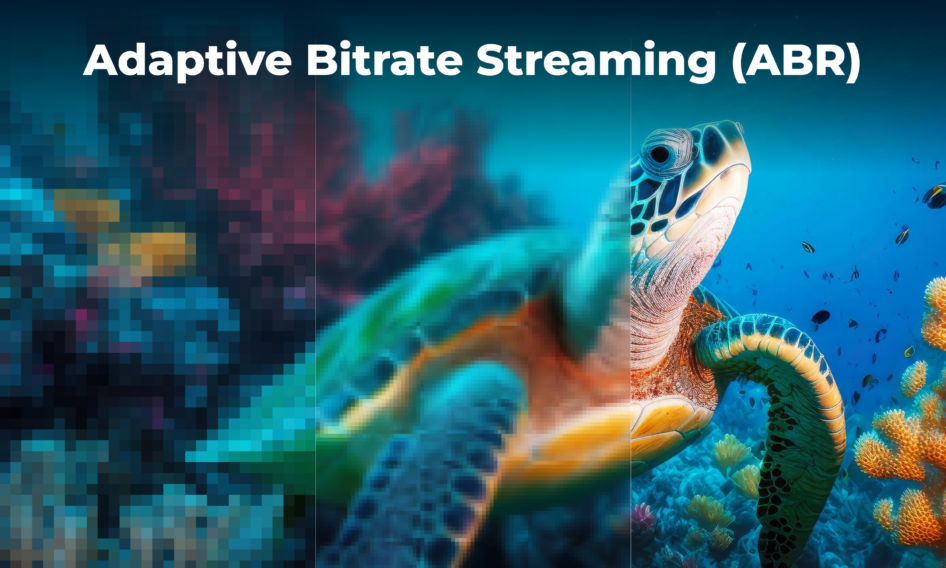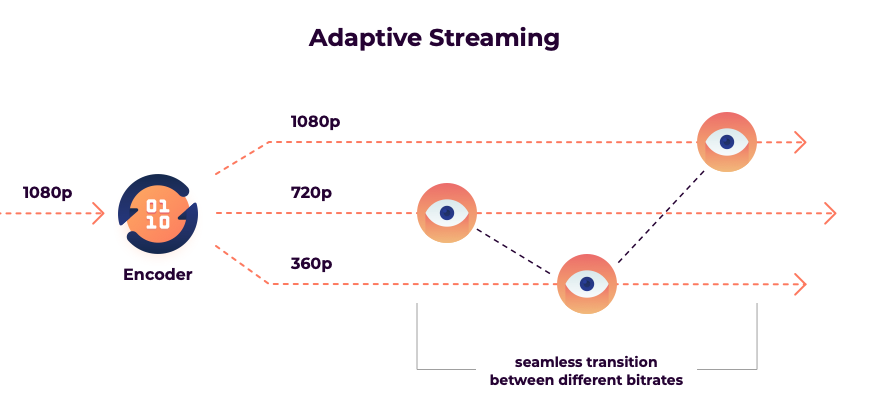Adaptive Bitrate Streaming (ABR)

Introduction
In today’s digital age, streaming video content has become an integral part of our daily lives. From binge-watching our favorite series to attending virtual conferences, the demand for high-quality, uninterrupted video streaming has never been higher. However, with this increasing demand comes the challenge of delivering seamless video experiences across various devices and network conditions. Enter Adaptive Bitrate Streaming (ABR), a technology that’s revolutionizing the way we consume video content online.
Understanding the Streaming Challenge
Before we dive into the intricacies of Adaptive Bitrate Streaming, it’s crucial to understand the challenges that led to its development. In the early days of video streaming, users often faced frustrating experiences:
- Buffering delays
- Sudden quality drops
- Complete playback failures
These issues weren’t just minor inconveniences; they significantly impacted user engagement and satisfaction. Studies have shown that 39% of viewers abandon a video if it buffers even once, and prolonged buffering times can drive users to competing services. In an era where numerous streaming options are available at our fingertips, providing a smooth, high-quality viewing experience is paramount for any streaming service’s success.
What is Adaptive Bitrate Streaming?
Adaptive Bitrate Streaming (ABR) is an advanced video delivery technique that dynamically adjusts the quality of a video stream in real-time based on a user’s network conditions and device capabilities. Unlike traditional streaming methods that deliver a fixed-quality stream, ABR ensures that viewers receive the best possible video quality their current internet connection can support.

Key Components of ABR:
- Dynamic Bitrate Adjustment – The ability to switch between different quality levels seamlessly during playback.
- Real-time Network Monitoring: Continuous assessment of the viewer’s available bandwidth.
- Multiple Encoded Versions: Preparation of the same video content at various quality levels and bitrates.
- Intelligent Streaming Algorithm: Software that decides which version of the video to serve based on current conditions.
How Does Adaptive Bitrate Streaming Work?
The process of Adaptive Bitrate Streaming involves several steps, each crucial for delivering a smooth viewing experience:
- Video Encoding – The journey begins with the video content itself. In ABR, a single video is encoded into multiple versions, each with a different bitrate and resolution. These versions range from low-quality (suitable for slow connections) to high-quality (for fast, stable connections).
- Segmentation – Each encoded version is then divided into small segments, typically a few seconds long. This segmentation allows for quick switching between different quality levels without interrupting the playback.
- Manifest File Creation – A manifest file is generated, which serves as a roadmap for the video player. This file contains information about all available versions of the video and their corresponding segments.
- Initial Quality Selection – When a viewer starts playing the video, the player analyzes the current network conditions and device capabilities to select an initial quality level.
- Continuous Monitoring and Adaptation -Throughout the playback, the video player continuously monitors:
– Available bandwidth
– Buffer status
– CPU usage
– Other relevant factors (like if a viewer’s tab in a browser is actually active)
Adaptive Bitrate Streaming Protocols
Several protocols have been developed to standardize and optimize the ABR process. The most prominent ones include:
MPEG-DASH (Dynamic Adaptive Streaming over HTTP)
- An international standard
- Widely adopted across various platforms
- Supports both live and on-demand streaming
HLS (HTTP Live Streaming)
- Developed by Apple
- Widely used for streaming to iOS devices and web browsers
- Excellent compatibility with CDNs
Microsoft Smooth Streaming
- Part of the Microsoft Silverlight framework
- Optimized for Windows-based devices
- Supports both live and on-demand content
CMAF (Common Media Application Format)
- A newer standard aiming to unify streaming formats
- Reduces storage and encoding costs
- Improves delivery efficiency across different protocols
Benefits of Adaptive Bitrate Streaming
The adoption of ABR technology brings numerous advantages to both content providers and viewers:
- Improved Viewer Experience: By adapting to network conditions, ABR significantly reduces buffering and playback interruptions.
- Wider Audience Reach: Content can be delivered effectively across various network speeds and device types.
- Bandwidth Optimization: ABR ensures efficient use of available bandwidth, benefiting both viewers and content delivery networks.
- Reduced Abandonment Rates: Smoother playback leads to increased viewer engagement and retention.
- Cost-Effective Content Delivery: By serving appropriate quality levels, ABR can reduce unnecessary data transfer and associated costs.
- Support for Multi-Device Streaming: ABR caters to the diverse ecosystem of devices, from smartphones to smart TVs.
- Enhanced Live Streaming: ABR is particularly beneficial for live events, ensuring consistent quality during peak viewership.
Challenges and Future Developments
While Adaptive Bitrate Streaming has significantly improved video delivery, it’s not without challenges:
- Encoding Complexity: Creating multiple versions of each video increases encoding time and storage requirements.
- Initial Playback Delay: The time taken to analyze network conditions can slightly delay the start of playback.
- Quality Fluctuations: Frequent quality changes can be noticeable and potentially distracting to some viewers.
- Content Protection: Ensuring robust DRM across multiple bitrates and devices can be complex.
Future developments in ABR are focused on addressing these challenges and further improving the technology:
- Reducing latency caused by the transcoding process,
- Faster and more seamless transitions between different qualities,
- Better audio/video synchronization between sources,
- Smarter, AI-based buffer management for work in unstable networks
Summary
Adaptive Bitrate Streaming has transformed the landscape of online video delivery. By dynamically adjusting video quality to match real-time network conditions, ABR ensures that viewers enjoy the best possible experience regardless of their device or connection speed. As internet infrastructure continues to evolve and viewer expectations rise, the importance of ABR in delivering high-quality, uninterrupted video content cannot be overstated.
For content providers, embracing ABR technology is no longer optional but a necessity to stay competitive in the rapidly evolving world of online video streaming. As we look to the future, continued advancements in ABR technology promise even more refined and seamless viewing experiences, further cementing its role as a cornerstone of modern video delivery.
Whether you’re a content creator, a streaming service provider, or simply an avid video consumer, understanding and leveraging Adaptive Bitrate Streaming is key to navigating the future of digital video content. As we continue to push the boundaries of what’s possible in online video, ABR will undoubtedly play a crucial role in shaping the streaming experiences of tomorrow.
Storm Streaming Server & Cloud Support for Adaptive Bitrate Streaming
Both the Storm Streaming Cloud platform and the Storm Streaming Server application, when combined with a dedicated player from the Storm Player or Storm Library series, support Adaptive Bitrate Streaming thanks to Transcoding functionality. Our system is not only capable of intelligently selecting the appropriate video quality based on network conditions and the viewer’s hardware capabilities, but it also ensures very low latency on transcoded sources.